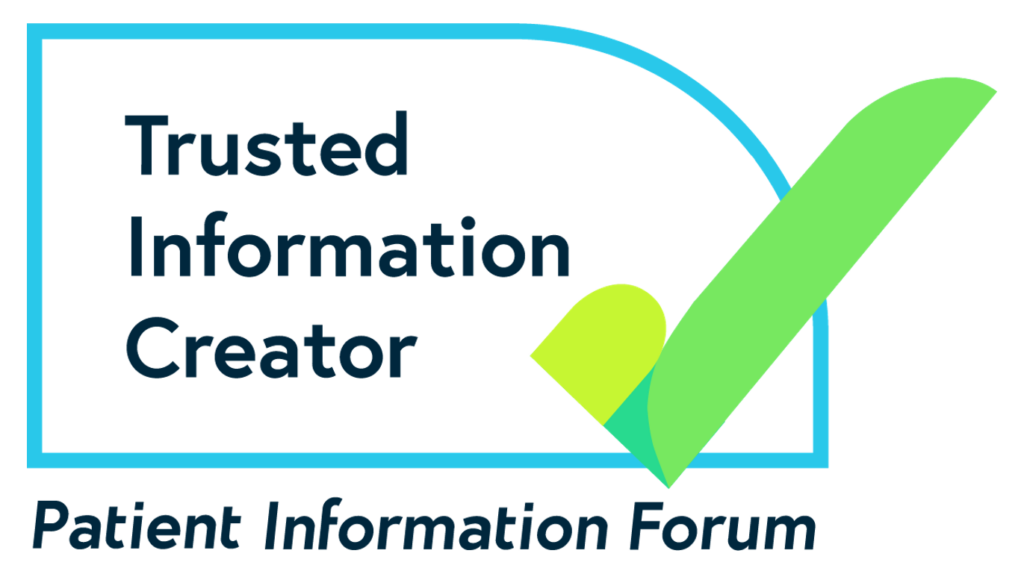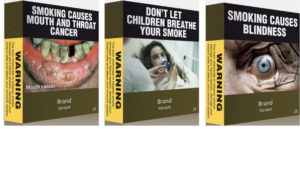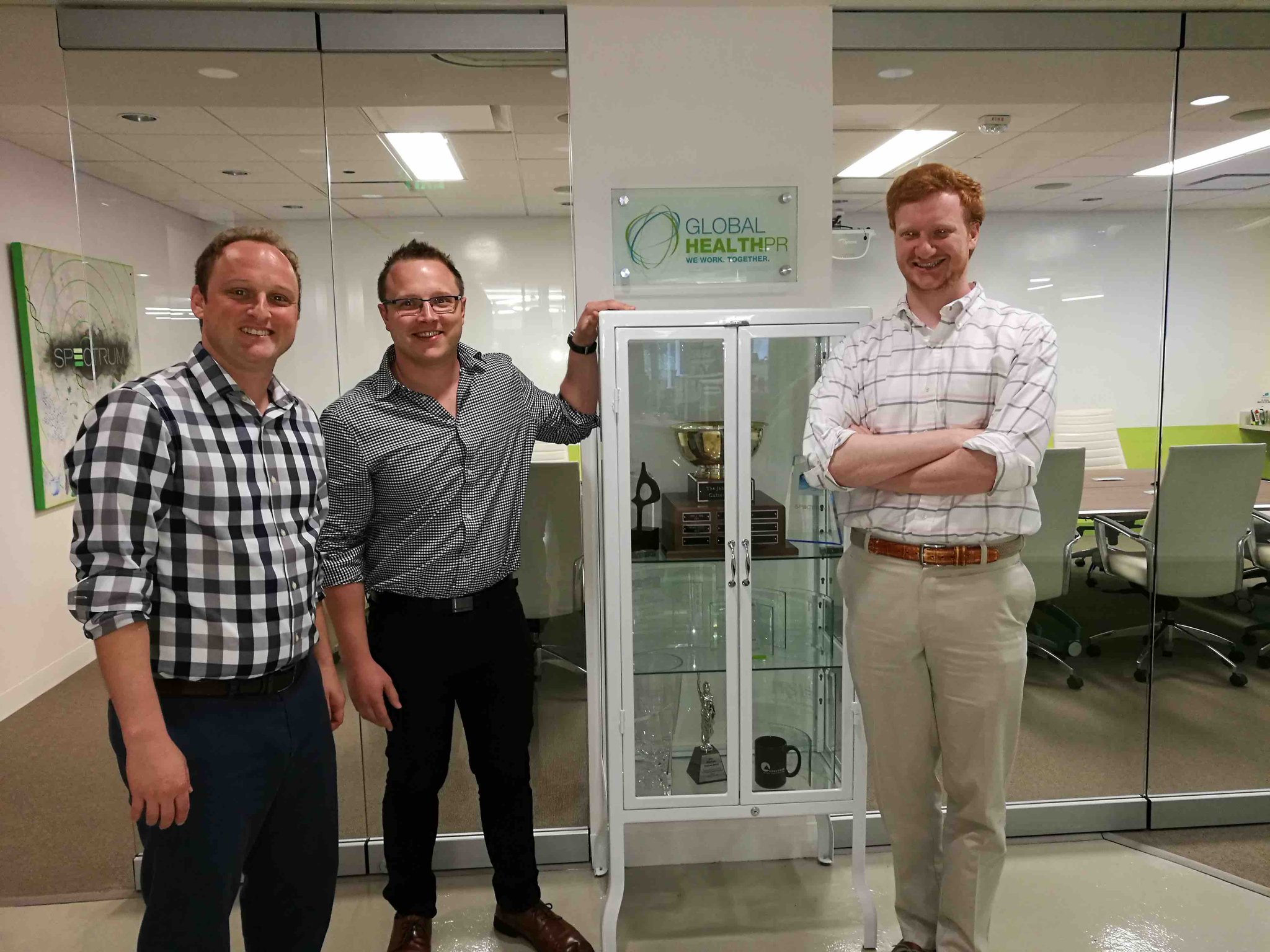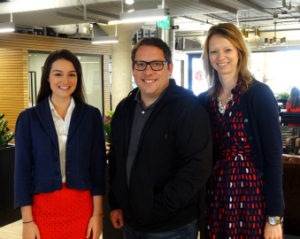by ghmc
Spectrum
We’re living in an era of unprecedented access to information. Yet, this brings unprecedented challenges, particularly when it comes to health. The increase of false health information has eroded public trust, which is the bedrock of good relations and practices in healthcare. Health information needs to be authentic and trustworthy, with the source of the information clear. So how can we, as healthcare communicators, fight back against misinformation?
The Impact of Health Misinformation
Poorer Personal Health Outcomes: Misinformation can lead to delayed or avoided medical care. It can also lead to a misunderstanding of risk factors, encouraging harmful behaviours.
Risks to Public Health: Misinformation isn’t just a personal matter; it poses significant risks to wider communities. For instance, vaccine misinformation has fuelled the resurgence of preventable diseases like whooping cough and measles.
Financial Strain on Healthcare Systems: The ripple effect extends to healthcare systems, with misinformation driving up costs. Preventable conditions, complications from delayed treatments and managing public health crises all contribute to ballooning expenses.
Tackling Health Misinformation
Empowerment through Education: Improving health literacy is a cornerstone of tackling misinformation. By educating patients and the general public to discern credible health information, we can empower them to make informed decisions about their health.
Transparency is Key: Pharmaceutical companies and healthcare providers must prioritise transparency. This means clearly communicating treatment benefits and risks, addressing concerns openly, and providing evidence-based information to rebuild trust.
Harnessing Technology: While technology can spread misinformation, it also holds the key combatting it. Digital tools can help to disseminate accurate information, and tech companies, including social media, can help to flag or remove false content.
Community Engagement: Trust-building within communities is vital. Engaging with leaders, influencers and organisations helps to share accurate information tailored to specific communities, fostering understanding and confidence. Tailoring messages to specific communities ensures they resonate and are more likely to be accepted.
Becoming a Trusted Information Creator
As proud health information creators and communicators, it’s our responsibility to ensure the information we produce is accurate, accessible, and evidence based. At Aurora, our rigorous approach to creating health information has earned recognition from the Patient Information Forum (PIF) through the PIF TICK – the UK’s only assessed quality mark for print and online health and care information.

The PIF launched the PIF TICK in May 2020. In July 2021, PIF launched the website www.piftick.org.uk to raise awareness of PIF TICK accredited members and help people find trusted health information. The site also includes guides on topics including spotting false health information and understanding evidence.
Aurora is one of the first healthcare communications agencies to receive accreditation with the PIF TICK, joining over 140 organizations including NHS trusts, patient advocacy groups, pharmaceutical companies, and individual health content creators. Our adherence to the 10 key criteria ensures that any health information we create on behalf of our clients can bear the PIF TICK, providing assurance to patients and the public that it meets the highest standards.
By fostering trust, transparency, and promoting health literacy, we empower individuals to make informed health decisions, leading to better outcomes for all.
“Argentina has three major strengths when considering clinical research: it has the ANMAT[1], a pioneering entity that sets a solid regulatory framework for conducting high-quality research; it has excellent healthcare professionals and increasingly professionalized centers, and finally, amidst a health system in crisis, there is a significant increase in patients’ interest in participating in clinical trials, which allows them to receive excellent healthcare,” said Dr. Federico Pérez Manghi, a clinician specializing in Nutrition and Diabetes and president of theCINME (Center for Metabolic Research) in Buenos Aires.
Clinical research has grown exponentially both in Argentina and throughout Latin America. According to data from the Argentine associations that connect clinical research organizations and multinational pharmaceutical companies (CAOIC and CAEME), between 2017 and 2021, the number of clinical trials conducted in the country increased by 79%. The specific improvements established by ANMAT for the approval processes, the digitalization of paperwork, and the prestige of the medical community are the main reasons for this growth in the international participation of medical trials. Clinical research encompasses all activities aimed at determining the efficacy, safety and quality of drugs, treatments, detection, diagnosis and prevention mechanisms. This has a profound impact not only on patients and the health system as a whole but also on the country’s economy.
In Argentina, as in the rest of the region and other countries around the world, the 2020 pandemic was a before-and-after moment for clinical research. The urgent need for a COVID-19 vaccine promoted information and awareness about clinical trials.
“Before 2020, when I invited a patient to participate in a clinical trial, I had to explain to them what it was about and debunk many misconceptions. Today, this has changed. I like telling my patients that at the beginning of the 20th century, life expectancy was only 40 years. Now, thanks to clinical research and the advancements made, the global average life expectancy has doubled,” Dr.Pérez Manghi said.
Dr. Georgina Sposetti, an Argentinian clinician and diabetologist, agrees with him. She is the founder of Un ensayo para mí (A Trial for Me), an innovative platform in Latin America, that connects doctors, researchers, and patients in a safe, reliable and controlled environment. The goal is to promote information about ongoing clinical trials and ensure access to them.
“The growth was exponential after 2020. The vaccine trials during the pandemic helped a lot. From 2021 on, the platform has grown by about 120-150% each year. When we post a clinical trial for a disease, the number of patients who enter and ask is incredible,” Dr.Sposetti said.
Dr. Sposetti created the platform based on her personal experience. In 2013, she was diagnosed with Lewis-Sumner syndrome, a rare nervous system disorder for which there was no treatment available at the time. Her first impulse was to go online and volunteer for a clinical trial.
“During my own pursuit, I realized that for anyone lacking technical knowledge or English, having a rare disease or cancer and wanting to know about ongoing research was a real mission impossible,” Sposetti added.Un ensayo para mí (A Trial for Me) was recognized in 2021 as a pioneer in the region by The Lancet Oncology, and is now active in eight Latin American countries, serving as a space for direct communication with people and working to democratize information.
The profile of Latin patients in particular is also key when considering clinical research. “Latin American patients like having regular contact with their doctor and want to attend the medical center. This leads to a significantly lower dropout rate in clinical trials compared to Anglo Saxon countries. They get more involved and there’s higher adherence,” noted Dr. Pérez Manghi.
Even so, there is still plenty to work on as less than 5% of the world’s total clinical research is conducted in Latin America. The main challenge is generating more data, a subject that is still pending in the region. “Argentina is already addressing this issue by investing heavily in technology. An example of this, is the development of Alpha Clinical Research, a platform of digital medical record that we are implementing in CINME”, concluded Pérez Manghi.
[1] ANMAT: Administración Nacional de Medicamentos, Alimentos y Tecnología Médica – National Administration of Drugs, Food and Medical Devices.
By Kaitlin Bowen and Mark Henderson
 Recently, partners from around the world gathered to learn, share and connect during the 2017 GLOBALHealthPR® (GHPR) Annual General Meeting, held in Mexico City. One of the unique aspects we discussed in Mexico is the annual GHPR employee exchange program. We recently interviewed the participants of this year’s program to reflect on the highlights:
Recently, partners from around the world gathered to learn, share and connect during the 2017 GLOBALHealthPR® (GHPR) Annual General Meeting, held in Mexico City. One of the unique aspects we discussed in Mexico is the annual GHPR employee exchange program. We recently interviewed the participants of this year’s program to reflect on the highlights:
As a part of the GLOBALHealthPR (GHPR) exchange program, Mark Henderson from VIVA! Communications in Australia and Kaitlin Bowen from Spectrum in the United States flew halfway around the world to “swap desks” and experience healthcare communications in each other’s home countries.
The exchange program, designed to enhance the connectivity of GHPR agencies, helps foster collaboration among the independent health and science communications network and enables agency employees the opportunity to gain insight into the drivers that affect health and science communications in other markets.
Kaitlin and Mark reflected recently on the major differences between the two countries and what they gained from their GLOBALHealthPR exchange experience.
What is the major difference you saw between the health industries in Australia and the United States?
Mark Henderson – VIVA! Communications, Australia: While in the States, I learned about medicines when I wasn’t even expecting to, as direct-to-consumer (DTC) advertisements often appeared on television and in magazines – this came as quite a surprise to me. I was enthralled by the advertising, but further to this, the amount of political discussion and conversation in the community around healthcare and medicines. That was intriguing, and I think it’s a good thing.
Living in Australia, we tend to become complacent about our access to free medicines and hospital care (well, free for the most part), and that shrinks the public conversation on healthcare in Australia somewhat. That is, unless one is championing a certain medicinal cause, working in the health industry or battling with a disease that requires difficult to access therapies.
On a slightly different note, I was shocked to see promotion of cigarettes in the U.S. I picke d up a magazine at the airport, and was confronted with a discount offer for a new brand of cigarettes. Not just an advertisement, but a discount offer for cigarettes – how can this be allowed?
d up a magazine at the airport, and was confronted with a discount offer for a new brand of cigarettes. Not just an advertisement, but a discount offer for cigarettes – how can this be allowed?
In Australia, we have so many regulations regarding cigarette advertising in attempts to decrease cancer rates –our laws include plain packaging, locked cabinets and no advertisements for cigarettes. So to see cigarettes advertised in the U.S. was confronting.
Kaitlin Bowen – Spectrum, United States: Due to the restrictions around direct-to-consumer advertising in Australia via the Medicines Australia Code of Conduct, healthcare companies and the PR and marketing agencies that support them must be creative to connect with stakeholders in meaningful ways. Empowering advocacy partners and patients is critical.
Due to this tightly regulated health communications environment, VIVA!’s work tends to be highly patient-centric, which is great. Most campaigns include regional or state-specific patient spokespeople who can provide first-hand commentary on what it’s like to live with a certain disease or condition. This, combined with dynamic content and a the knack for media relations creates comprehensive patient case studies, videos and infographics (both still and animated) that are really easy for the media to reference and extract for use in their stories.
How does the working culture differ between VIVA! & Spectrum?
KB, USA: Overall, the team is very collaborative and it’s often all hands on deck to do great work for our clients. Even the agency’s Principal is not afraid to jump in and help, lending her expertise and experience to all aspects of client service, including making pitch calls and proofing content.
Additionally, I found Australians to be quite direct with each other – no sugar coating feedback or direction – which helps keep projects moving along efficiently. I think it also helps boost camaraderie within the agency, which can go a long way for maintaining morale among employees and ultimately helps drive a better quality product for clients.
The VIVA! office had a similar vibe to our Spectrum offices with lots of open, collaborative space and cool, scientific imagery around the office.
I view my Spectrum team as family, so I think the VIVA! gang is pretty much our cousins Down Under – the people, culture and energy in the office space were surprisingly similar to our Spectrum team here in the U.S. That’s the great part about the GLOBALHealthPR network – the agencies are so like-minded not only in our office environments, but also in our values and what motivates us to do great work for our clients. I feel so fortunate to have had the opportunity to live, work and play in Sydney for a few weeks and form long-lasting friendships with our GLOBALHealthPR partners in Australia.
MH, AUS: Overall, both Spectrum and VIVA! work in the highly specialised healthcare PR arena, part of which allows us to craft and share the fascinating stories that create buzz and hype around healthcare therapies, medicines, medical research and science.
I was really privileged to meet so many American healthcare PR peers, and was impressed by the different stories and reasons for pursuing healthcare communications. Some of the Spectrum staff have Ph.D.’s and are trained scientists. The knowledge and experience that these experts can lend to the science of health is invaluable, and they are lovely people too!
How will you continue to build relationships across the GLOBALHealthPR network now that you’re back home?
MH, AUS: I think the amazing thing about the exchange program is that we are visiting and partnering with not just friends, but colleagues. I’m thrilled to be able to have the opportunity to continue to grow and build relationships with all of my healthcare PR peers. It’s something truly unique to GLOBALHealthPR.
I am eager to remain in touch, and to continue working alongside and collaborating with my American counterparts, and friends in the U.S.
KB, USA: In the words of Uncle Ben from Spiderman, “with great power comes great responsibility.” Because I’ve been given the amazing privilege to participate in the GHPR exchange program, I believe it’s important as partners that we continue to support and build the GLOBALHealthPR network on behalf of each of our agencies.
The beauty of GHPR is that each of us are experts in our local healthcare marketplaces, but we have that global reach and connectivity across the world through each partner agency. What’s really special is that we’re not just professional acquaintances, but friends. I remain connected to my VIVA! colleagues on Facebook and always look forward to hearing the latest client updates and the GHPR Annual General Meeting. In the spirit of the GHPR exchange program, I will continue to work to foster collaboration and best practice sharing across the network.
Kaitlin Bowen is an Account Director at GHPR U.S. partner Spectrum. Mark Henderson is the Queensland Branch Manager at GHPR Australian partner VIVA! Communications. To check out Kaitlin’s and Mark’s experiences from the GLOBALHealthPR Professional Exchange Program and other GHPR programming, use #GHPRConnects to connect and join the conversation.
Watch this space for updates on our one-of-a-kind program from now through November.
Day 1 of Mark Henderson’s GLOBALHealthPR Exchange at Spectrum, Washington, D.C.

Since arriving in Washington, DC as part of the GLOBALHealthPR Professional Exchange Program, I’ve been privileged to witness a lot of American history, from Capitol Hill (the seat of the United States Congress and legislative branch of the US Federal Government), to The White House (the official residence and principal workplace of the President of the US, also dubbed “The Nation’s Most Famous Address”).
Warmly welcomed by Andrew Bailey, and the Spectrum team at its Washington DC offices today (Monday, September 19, 2016), I’ve been given a tour of the office and met many staff. I’ve also been privy to an orientation from Spectrum’s HR lead, Julian, who documented the company’s 20 year-long history, founded on the idea of “transforming complicated science into compelling stories,” to its dramatic growth in the past four years, which has seen the company double in size to upwards of 60 staff members across three offices (DC, New York and Atlanta), and those who work remotely.
Further to this introduction, I’ve been privileged to participate in several brainstorm sessions, and teleconferences that have offered me an opportunity to begin to understand the way in which business gets done at Spectrum. I’ve been truly impressed by all that I’ve learned since arriving here.

I was privileged to speak with Tim Goddard, Senior Vice President of GlOBALHealthPR, who provided me a warm welcome to the company, and outlined many of the different opportunities I will experience in the United States during my two week tenure here. Notably, I will be meeting with each of the four Functional Group Leads for Spectrum, including those representing the BioPharma, BioTech, Consumer Science and Public Affairs divisions, along with a host of other senior staff, such as the business managers who work within each of these groups.
It’s only day one, but I already feel like I’ve learned so much about Spectrum, its rich and vibrant history, and plans for the future, and I very much look forward to what the coming weeks have in store, both Washington DC, and in New York City.
Mark is participating in the GLOBALHealthPR Professional Exchange Program representing exclusive Australian partner, VIVA! Communications. The Program aims to enhance the connectivity of GLOBALHealthPR agencies through collaboration, best practice sharing, and insights into the drivers that affect health and science communications in different markets worldwide, and to build professional relationships with other GLOBALHealthPR personnel around the globe.
About Mark: Mark Henderson is Queensland Branch Manager at GHPR Australia partner, VIVA! Communications. To follow his experiences on the GLOBALHealthPR Professional Exchange Program online, use #GHPRConnects to join the conversation and follow all of the 2016 exchange programming.
We are very happy to announce that our US Partner and Global hub, Spectrum, has officially opened their new Atlanta office. The new location is in the recently opened Ponce City Market, in the historic Sears and Roebuck building. The SpectrumATL office is strategically positioned in an emerging biotechnology hotspot nearby companies and institutions such as Coca-Cola, the American Cancer Society, Emory University and the US Centers for Disease Control and Prevention.
The new office will be headed by Spectrum Senior Vice President and Partner Amanda Sellers, a Georgia native. The new office opens up many new opportunities, and an entirely new talent market. “We know talented teams draw dynamic clients, and Spectrum is thrilled to be able to tap into this vibrant scientific community,” Sellers said.
Strategic hires, expanded offerings and a commitment to client service have fueled Spectrum’s growth over the past two years, and led to the opening of their New York City office in March. The Atlanta office will reflect the “One Spectrum” ideology that drives the agency’s culture, bringing together the best in marketing communications talent and expertise regardless of geography to deliver the best thinking for clients.

